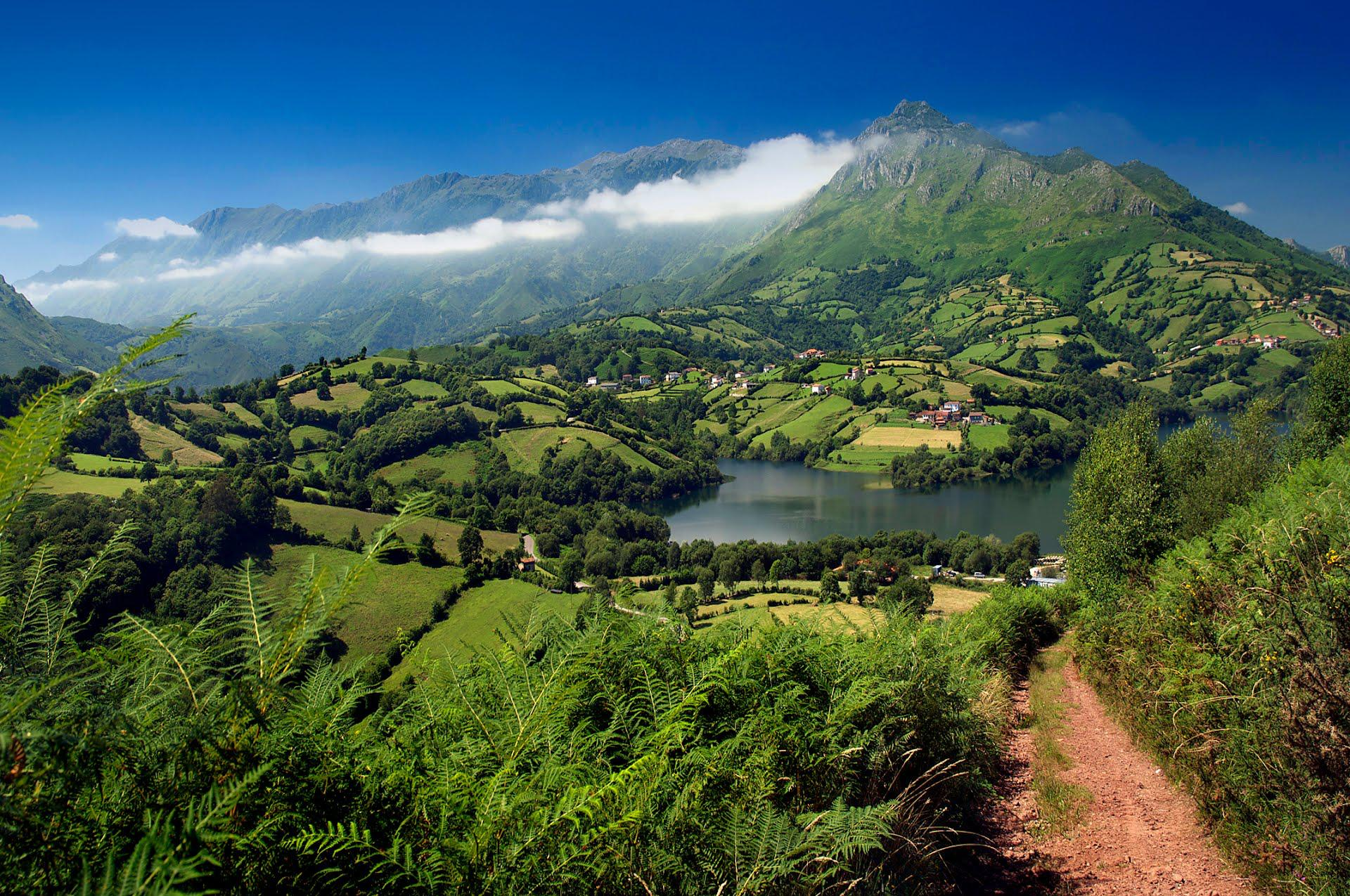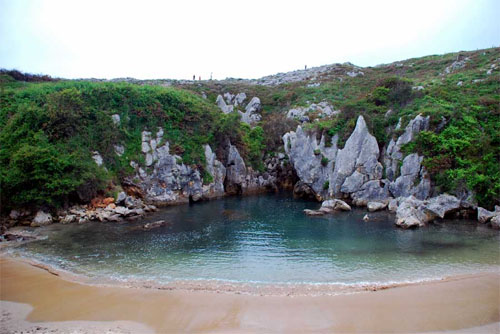How much do the tourists spend in Spain?
Tuesday, April 28, 2015
 Tourists who visited Spain in the first three months of the year spent more than those who came during the same period last year,according to industry sources on Monday. Tourists who visited Spain in the first three months of the year spent more than those who came during the same period last year,according to industry sources on Monday.
Tourist spending grew 7.0% year-on-year to reach over €10.7 billion by late March, while visitor numbers rose 5.3% for a three-month total of 10.6 million people, according to the Institute for Tourism Studies (IET), which answers to the Industry Ministry.
The numbers show that not only are more people coming to Spain, but they also have bigger budgets.
Average tourist spending in the first quarter of the year was €1,015 for the entire trip and €116 a day, representing a 1.6% and a 3.1% increase, respectively, from the same period last year.
But a traveler’s budget depends on many factors. Official statistics reflect all expenses incurred from the moment a tourist leaves his or her residence until they return home. This includes airline or sea cruise tickets, even if the money does not go to Spanish companies.
By that standard, Latin American tourists spend a lot while French or Portuguese nationals, who often drive to Spain, contribute little to the official figures.
Keeping this variable in mind, the biggest spenders are Scandinavians (€1,184 per tourist) and Germans (€1,024).
Visitors to Spain spent a combined total of €10.7 billion from January to March. Although Scandinavian tourists are more ‛profitable’ in that they each spend more than visitors from other nations, the biggest overall contributors are the British, whose sheer numbers mean a higher total disbursement.
Visitors from the UK spent a combined €1.88 billion, a 14.8% rise from the same period last year. They were followed by the Germans with €1.69 billion and Italians with €503 million.
The Madrid region is where travelers spend the most money on average: €1,177 per stay and €150 a day. However, because Madrid does not receive as many visitors as other regions of Spain, the overall champion is the Canary Islands, with tourism expenditure of €3.56 billion between January and March, followed by Catalonia (€2.29 billion) and Andalusia (€1.54 billion).
In principle, if tourist spending goes up, the tourism sector should benefit. But there is a difference between what a tourist spends and what Spain collects per tourist. Because travel to and from Spain is included in tourist spending even if the travel company is not Spanish, a better measure of tourism revenues is the balance of payments drawn up by the Bank of Spain, which measures currency inflows.
This agency, however, does not release figures as frequently as the IET. The last available statistics are from January, and show tourism spending to be €3.06 billion, compared with the €3.4 billion reflected by the tourism institute.
[source - El Pais]
 0
Like
Published at 12:11 PM Comments (0)
0
Like
Published at 12:11 PM Comments (0)
ASTURIAS – Arguably one of the best places to live in Spain
Monday, April 27, 2015

The Principality of Asturias is located in the North of Spain occupying a territory of 10,603 km2 and is home to 1,085,000 people. It is bordered on the West by Galicia, on the North by the Cantabrian Sea, on the East by Cantabria and to the South by the province of León. The capital is Oviedo, with Gijón being the largest city.
The international airport of Asturias is located in the locality of Santiago del Monte Castrillón which is at the center of the province and is only a 10 minutes drive by car from Avilés and 30 minutes from Oviedo and Gijón. Asturias also has the Morgal airfield in Llanera which is a few minutes’ drive from Oviedo.
There is an extensive rail network managed by FEVE at a regional and local level and RENFE providing national services. Currently an AVE high-speed train line is under construction which will reduce travel time between Asturias Madrid.
There are two main national motorways crossing the province and a wide and well maintained network of roads. You can cross Asturias from one extreme to another in a maximum of three hours.
The history of Asturias is linked to the symbol of the foundation and rebirth of the New Spain. This started when King Pelayo, who previously founded the Kingdom of Asturias, initiated the re-conquest of an occupied Spain by the Moorish by winning the Battle of Covadonga on the 28th of May, 722AD. It was for this reason and while Spain was been re-conquered that the territory of Asturias became the Kingdom of Asturias and Castilla and Leon.
Asturias is also at the origin of the “Santiago or Saint James Route“ thanks to King Alfonso II, King of Asturias and Galicia who was the first person to initiate the pilgrimage to Santiago from the city of Oviedo and was also the one who ordered the construction of a church in Compostela to protect the relics of the Apostle Santiago. This Route started in Oviedo and it is called “The Primitive Route”. Shortly afterwards, people from many other European towns started to make the pilgrimage to Santiago along with the old existing routes from Rome and Jerusalem.

Asturias became a Principality in 1388 due to the war of succession between Duchess Constance of Lancaster, wife of the Duke of Lancaster and daughter of Pedro I, the rightful heir and her uncle Enrique II who was the illegitimate son of the King and also the assassin of his brother Pedro I. The dispute was finally put to rest with the arranged marriage between the grandchild of Pedro I and Enrique II allowing Catalina of Lancaster and Enrique III to become the first Prince and Princess of Asturias. Since then, the first son of the King of Spain has both the title of heir to the Spanish throne and also serves as the Prince of Asturias.
 
Prior to the first monarchs, Asturias was well populated and considered a desirable territory for many different cultures throughout the ages. It was conquered and fought over due to its geographical situation, the fertility of the land and especially for the richness of its natural resources, gold and other precious metals. The inhabitants of Asturias were called Astures but they had to coexist with other cultures passing through such as Iberians, Vascones, Celts and Romans among others. Going back even further in time, Asturias was home to early man and further again, the Jurassic period of which traces can still be seen in region today.

This varied history has left the region rich in culture and history you can even experience excellent examples of Dinosaur Traces, Palaeolithic Cave Paintings and Celtic Settlements. Also, you will find wonderful examples of Pre-Romanesque Art, Old Roman Routes and religious and civil architecture.
More recently, Asturias was an important location during the Industrial Revolution bringing wealth to the area and many large Industrial developments. Asturians who had once emigrated to the Americas returned, bringing with them the wonderful Indiano architecture and dotting the landscape with churches, large estates and palaces.
With its lush green lands and a vast coastline, Asturias is home to many farmers and fisherman with very distinctive ethnographic styles of classical and rural constructions, characteristic “Horreos” which are food stores and still practiced traditions.
As a consequence of this amazing environment of mountains, valleys, rivers, sea, fauna and flora, 40% of the territory is designated as natural reserve, the highest percentage of any European region. This makes Asturias ideal for all kinds of sporting activities including hiking, climbing, cycling, canoeing, MBT, surfing, skiing, fishing and hunting………. the list goes on.
Nowadays Asturias boasts modern and cosmopolitan cities and towns, Majestic Mountains, Natural Parks & Biosphere Reserves, Protected Coastal Landscapes and Natural Monuments, amazing Blue Flag Beaches, very welcoming people and plenty of activities to offer tourists.
Asturias doesn’t just live from tourism and services. It also has a large entrepreneurial and industrial sector dedicated to the agri-food industry, metal, chemical, glass and mining industries as well as renewable energies. It is dedicated to the development and use of clean energy with innovative projects in offshore wind energy and a centre of collection, treatment and disposal of waste, which is a leading environmental model in Spain.
95% of the population has access to high-speed broadband internet services which makes Asturias the Spanish region with the highest rate of broadband cable internet access.
It is also the province in Spain with the highest quality of public health care per capita, offering access to 21 hospitals of which 14 are public and 7 private, including the world-famous Ophthalmic Institute “Fernandez Vega”.
Add a large cultural infrastructure, excellent cuisine and the innate kindness of its inhabitants and you will understand why the quality of life in Asturias is arguably one of the best in Spain.
 2
Like
Published at 12:26 PM Comments (15)
2
Like
Published at 12:26 PM Comments (15)
Why your bank account may be blocked if you don’t hand in your ID
Wednesday, April 22, 2015
 12.36.49.png)
April 30 marks the deadline for banks to collect and digitalize up-to-date identification documents for all account holders, as per existing legislation. For Spaniards, this means the DNI national identity card; for foreign residents, their residency card or passport.
In some cases, clients will also be asked for information regarding their economic activities, as part of new requirements to combat money laundering and the financing of terrorism.
While the obligation to keep digital records of clients’ personal data was introduced in 2010, the law gave lenders a five-year deadline to complete the task.
“We’re all prone to leaving things until the last minute,” confesses José María Roldán, president of the Spanish Banking Association (AEB), adding that the sector is now working around the clock to meet the deadline.
At this point, clients who have not yet been contacted by their bank – the latter has the obligation to do so – can assume that no further action is necessary and that their ID is already in the bank’s possession.
The problem could arise if the contact information in the lender’s power – address, email, telephone number – is outdated and the client cannot be reached with the request for new data.
Accounts that do not meet the requirements will be blocked on May 1.
“Obviously, when the client turns in their ID, the account will be activated again,” explains a bank worker.
But after three months, these blocked accounts will be transferred to a different category known as “cuentas de orden;” recovering one’s money at that point could be more complicated and require additional paperwork.
Some sources talk about more than five million clients without an up-to-date ID document, although banking associations refute this figure.
There are an estimated 70 million bank accounts in Spain, of which 50 million are held by private individuals. The sheer volume of paperwork involved has forced some lenders to hire external firms to help them deal with it.
Financial companies such as the one that handles credit cards for the El Corte Inglés department store are also under the same legal obligation, and have offered clients numerous ways to provide the necessary information.
For these companies, the issue is critical, because their clients pay with cards that will get blocked on May 1 if no digital ID records exist.
A few months ago, the banking sector applied for a deadline extension, but it was denied. The Economy Ministry notes that “lenders had the obligation to collect and conserve copies of their clients’ ID since 1993. The 2010 law expressly established that electronic records had to be kept to avoid documents getting misplaced. In 2010, entities were given a five-year period to obtain that digitalized information.”
The problem is particularly intense at lenders that have undergone mergers in recent years, leading to the transfer of documents and closure of branch offices, or even of entire banks.
 0
Like
Published at 12:37 PM Comments (1)
0
Like
Published at 12:37 PM Comments (1)
Spain: Great Place to live - but to work?
Wednesday, April 15, 2015
 Spaniards sleep fewer hours and work longer days than their European neighbors, but are less productive. At the same time Spain fails to attract overseas talent, while tens of thousands of well-educated Spanish youngsters are heading abroad in search of work. The country also has one of the EU’s highest school drop-out rates and a work culture hostile to the needs of families with young children. Meanwhile, its birth rate is fast approaching negative as its population ages. Spaniards sleep fewer hours and work longer days than their European neighbors, but are less productive. At the same time Spain fails to attract overseas talent, while tens of thousands of well-educated Spanish youngsters are heading abroad in search of work. The country also has one of the EU’s highest school drop-out rates and a work culture hostile to the needs of families with young children. Meanwhile, its birth rate is fast approaching negative as its population ages.
It’s long been a cliché that Spain is a great place to live but a terrible country to work, and over the last five years, as the economic crisis has bitten deeper, many of those lucky enough still to have a job are finding themselves working harder, often for lower wages and with fewer resources, as their employers strive for greater competitiveness. While it’s true that official figures for the average number of working hours have fallen in recent years, to 1,699 per year, this number is still significantly higher than in Germany (1,362), or France (1,489).
A 2012 survey by global consultancy Reputation Institute shows that a significant majority of people in G-8 countries believe that Spain is indeed a great place to live, but one of the worst in which to invest or purchase quality goods. What’s more, the image of the land of the siesta endures for a good reason, says one Spanish researcher, who has lived abroad for many years and studied working habits throughout the world.
Her conclusions are damning: “The clichés about Spain are more or less true. Despite the crisis, this is still a great place to live: the climate, the food, the healthcare and education systems, the way people interact with each other… In this country, you’re not going to die in the street or at the entrance to a hospital, like you could in the United States due to a lack of health insurance. But let’s admit it, working practices are poor, we’re not really professional about our work. You see it in taxi drivers, civil servants, aerospace engineers; in just about every profession,” she says.
“For one thing, the professional and personal spheres are not separated in the workplace, which gives rise to false loyalties and conflicts; also, employees are rarely given clear goals, instead simply focusing on meeting deadlines. Then there are the long working days with two-hour lunches. Bosses are mediocre, yet behave like gods, unable, or unwilling to explain themselves. Meanwhile, everybody says they’re bilingual, but actually, they’re not. Furthermore, this is still a country where everybody hopes to get rich quick, where people scheme and plot, where personal or family contacts are everything, and where junk television influences the way people think they should earn a living.”
Ramón Castreana, the head of human resources at power company Iberdrola, has also spent many years working abroad and disagrees with much of that analysis. He argues that some Spaniards are highly professional, especially those who have gone to work abroad. “I can tell you from personal experience those whom I have met overseas are well trained, and adapt very well, much better than their English-speaking counterparts.”
But Jaime Malet, head of the US-Spanish Chamber of Commerce, accepts that among the problems Spain faces are widespread nepotism, absenteeism, and fewer incentives to improve productivity, along with a refusal to recognize and reward talent. He comes back to those marathon working days: “Productivity would increase if office hours were more rational. People don’t sleep enough and they tend to have no life outside work. We have to move toward a more compact working day, by reducing lunch breaks. He also says that bringing the prime-time slot on television forward by an hour to 9pm, as in the rest of Europe, or North America, would also help.
According to Javier Noya, a lecturer in political science at Madrid’s Complutense University, the figures speak for themselves, pointing to the OECD’s 2013 annual report, which puts Spain in 13th place out of 30 countries for productivity, on a par with Greece and Italy. A survey by leading Spanish bank BBVA puts Spain in top place when it comes to social issues: the number of friends people have here, the time they spend in the street, and drinking in bars. This is a point worth noting, says Noya, because Spaniards spend more time contacting friends and families on the social networks: “In Germany, a meeting at work usually lasts half-an-hour, or an hour at most, but here, we stretch it out to two hours, because we talk about soccer, the weather, the family.”
At the same time, most Spaniards who work, or have recent memories of doing so, would probably admit that they spend more time chatting with colleagues about non-work-related matters or answering personal emails than their counterparts in other countries. In which case, will the Spanish have to sacrifice this sociability in the workplace? Perhaps loving one’s work is not in itself the antidote to depression, while earning one’s salary need not require giving everything up to get the job done.
Toni Ferrer of labor union UGT says that a good workplace atmosphere and job satisfaction have a positive impact on productivity, in the same way that poor organization, being forced to work long hours, and being constantly interrupted have a negative one. A study by multinational consultancy Regus gives Spain a work-life balance score of 97, compared to the global average of 120, and concludes that just one third of Spaniards are happy about the amount of time they are able to spend with their families, compared to an average 60 percent in all other countries.
Ignacio Buqueras, president of the Commission for the Rationalization of Working Hours (Arhoe), says that on average Spaniards get 53 minutes less sleep than their European neighbors, which impacts on productivity and accidents in the workplace. “What’s more, our children don’t sleep enough either. Instead of looking to do our best while at work, ours is a culture of being seen to be working,” he says.
All of which is why Carmen Quintanilla, head of the Equality Committee in Spain’s Congress, says the time has come for a national debate on working practices, which hit Spanish women, and the country’s birth rate, particularly hard. “How can it be that Spanish women have to choose between being a mother or having a career?” she asks.
That said, Spain’s automated manufacturing plants are among the most productive in Europe: “We work more hours, and at a faster pace than the majority of other countries,” says a sector employee.
“I think the Spanish are as productive as the Germans, although they have a different concept of work,” says Margareta Hauschild, director of the Madrid branch of the Goethe Institut, Germany’s worldwide cultural and language-teaching organization. “Unlike Germany, where for many people work is a place to express yourself and achieve personal goals, in Spain, few people want to work for the pleasure of doing so. Both in my private and public spheres, my experience is that people here do their jobs, but I come across a lot of people who are very anxious to find a position for life, they’re obsessed with security. And then, despite the high drop-out rate and youth unemployment, everybody wants their children to go to university rather than learn a trade, something that is still looked down on here. I also see strong resistance to labor market reforms and a negative view of employers, although workers here have more rights than in Germany, for example,” she says.
Anything to say?
[source : el pais]
 0
Like
Published at 12:27 PM Comments (0)
0
Like
Published at 12:27 PM Comments (0)
Spam post or Abuse? Please let us know
|
|